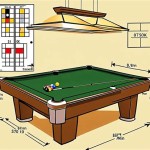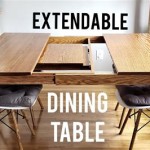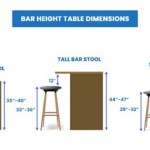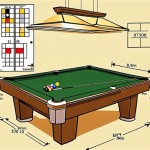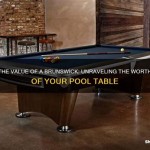```html
Decoding the Enduring Appeal of the Pottery Barn Griffin Table
The Pottery Barn Griffin table represents a cornerstone of modern American home décor. Its enduring popularity stems from a confluence of factors, including its versatile design, durable construction, and association with a reputable brand. Understanding the nuances of the Griffin table necessitates a detailed examination of its design elements, material composition, and applicability to various interior design styles.
Initially introduced as a coffee table, the Griffin collection has expanded to encompass a range of sizes and functionalities, including side tables, console tables, and even dining tables. This adaptability underscores the table's core design principle: a focus on clean lines and a neutral aesthetic that seamlessly integrates into diverse living spaces.
The continued prevalence of the Griffin table in design magazines and online platforms speaks to its success in capturing a timeless and accessible aesthetic. Its minimalist design philosophy, coupled with its readily available nature, makes it a favored choice for homeowners seeking a blend of style and practicality.
Key Point 1: Structural Design and Material Composition
The Pottery Barn Griffin table, regardless of its specific iteration, typically features a rectangular or square tabletop supported by a robust base. The base often consists of four straight legs connected by a lower shelf or stretcher. This structural configuration contributes to the table’s stability and provides additional storage or display space.
A defining characteristic of the Griffin table is its material composition. Commonly constructed from kiln-dried wood, often poplar or pine, the table offers inherent strength and resistance to warping. The kiln-drying process removes moisture from the wood, minimizing the likelihood of cracking or shrinking over time. This contributes significantly to the table’s longevity.
The tabletop itself is often crafted from engineered wood, such as MDF (Medium-Density Fiberboard) or plywood, which is then veneered with solid wood or finished with a durable lacquer. This construction method allows for a smooth, consistent surface that is less prone to imperfections than solid wood alone. The veneer adds a layer of visual appeal, replicating the look of solid wood while maintaining cost-effectiveness.
The hardware used in the assembly of the Griffin table is typically made from metal, such as steel or iron, which is then finished to complement the overall design. This hardware contributes to the table’s structural integrity and ensures secure connections between the various components.
The finish applied to the Griffin table plays a crucial role in its aesthetic appeal and durability. Pottery Barn offers a range of finishes, including painted, stained, and lacquered options. These finishes not only enhance the table’s appearance but also provide a protective layer against scratches, stains, and other types of damage. The specific finish chosen can greatly influence the table’s overall style and its suitability for different interior design schemes.
Key Point 2: Versatility in Interior Design Applications
The Griffin table’s versatility is a major factor in its widespread appeal. Its minimalist design allows it to blend seamlessly into a variety of interior design styles, from traditional to contemporary. The neutral color palette typically associated with the Griffin collection – including shades of brown, white, and gray – further enhances its adaptability.
In a traditional setting, the Griffin table can be paired with upholstered sofas, patterned rugs, and antique accessories to create a warm and inviting atmosphere. The table’s clean lines provide a counterpoint to the more ornate elements of traditional décor, preventing the space from feeling cluttered or overwhelming.
In a modern setting, the Griffin table can be combined with sleek furniture, minimalist artwork, and metallic accents to create a sophisticated and contemporary space. The table’s simple form complements the clean lines and geometric shapes that are characteristic of modern design.
The Griffin table is also well-suited for transitional interiors, which blend elements of both traditional and modern design. In this context, the table can serve as a bridge between the two styles, providing a sense of balance and harmony.
Beyond its stylistic versatility, the Griffin table also offers functional adaptability. As a coffee table, it provides a surface for drinks, books, and decorative objects. As a side table, it offers convenient space for lamps, picture frames, and other personal items. As a console table, it can be used to display artwork, store household essentials, or serve as a makeshift entryway table.
The availability of the Griffin table in various sizes and configurations further enhances its versatility. Homeowners can choose the size and shape that best suits their needs and space constraints. This adaptability makes the Griffin table a practical and stylish choice for a wide range of living spaces.
Key Point 3: Brand Reputation and Accessibility
Pottery Barn's established reputation for quality and customer service significantly contributes to the Griffin table's desirability. The brand has cultivated an image of sophisticated yet accessible design, attracting customers who value both style and value. This brand association provides a level of reassurance regarding the product's quality and durability.
The readily available nature of the Griffin table through Pottery Barn's retail stores and online platform further enhances its accessibility. This widespread availability makes it easy for customers to purchase the table, regardless of their location or shopping preferences.
Pottery Barn's marketing efforts also play a role in the Griffin table's popularity. The company frequently features the table in its catalogs, website, and social media campaigns, showcasing its versatility and style. These marketing efforts create awareness and generate demand for the product.
Furthermore, Pottery Barn's commitment to customer satisfaction contributes to the positive perception of the Griffin table. The company offers a generous return policy and provides responsive customer support, ensuring that customers are satisfied with their purchases. This commitment to customer service fosters trust and loyalty, encouraging repeat business.
The combination of brand reputation, accessibility, and effective marketing has solidified the Pottery Barn Griffin table's position as a staple of modern American home décor. Its enduring appeal is a testament to its timeless design, durable construction, and the power of a well-established brand.
In conclusion, the Pottery Barn Griffin table’s success is the result of carefully considered design principles, durable materials, and strategic brand management. Its versatility across various interior design styles contributes to its enduring popularity among homeowners seeking a blend of aesthetic appeal and practical functionality.
```
Griffin Rectangular Reclaimed Wood Coffee Table Pottery Barn

Griffin Reclaimed Wood Dining Table Pottery Barn

Griffin Reclaimed Wood Dining Bench Pottery Barn

Griffin Reclaimed Wood Fixed Dining Table Potterybarn Home Decor

Pottery Barn Griffin Reclaimed Wood Coffee Table

Griffin Rectangular Reclaimed Wood End Table Pottery Barn

Griffin Round Reclaimed Wood Coffee Table Pottery Barn

Griffin Furniture Collection Pottery Barn

Griffin Pool Table Pottery Barn

Pottery Barn Griffin 33 Reclaimed Wood Coffee Table 机 テーブル 73276935 Bonfanti Com Br



